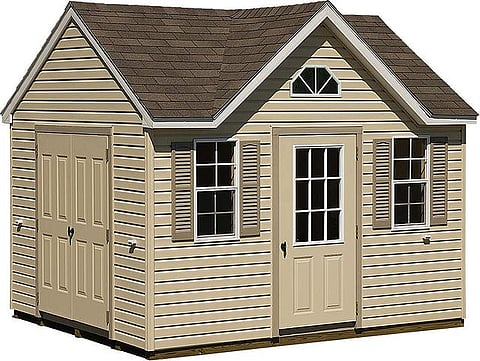By Sujain Thomas
When it comes to protecting and enhancing the exterior of your home, choosing a suitable siding material is essential. With many options available, it can be overwhelming for homeowners to navigate the choices. This comprehensive guide will explore different siding materials and provide valuable insights to help homeowners make decisions based on their sneeds and preferences.
1. Vinyl Siding: Vinyl siding has gained popularity for its affordability, versatility, and low-maintenance properties. Vancouver's top siding specialists can guide homeowners through various vinyl options, including textures, colors, and styles. They can provide insights into the durability, energy efficiency, and long-lasting performance of vinyl siding, making it an attractive choice for many homeowners.
2. Fiber Cement Siding: Durable, Fire-Resistant and Aesthetic Appeal Fiber cement siding offers durability, fire resistance, and aesthetic appeal. We will discuss the composition of fiber cement siding, its ability to mimic the appearance of natural wood or stone, and its resistance to rot, insects, and harsh weather conditions. Homeowners will learn about the benefits of fiber cement siding and its suitability for different architectural styles.
3. Wood Siding: Classic Charm, Natural Beauty, and Timeless Appeal Wood siding has a timeless appeal and brings natural beauty to any home. We will explore the various wood siding types, such as cedar, redwood, and pine, and discuss their unique characteristics, durability, and maintenance requirements. Homeowners will gain insights into the advantages and considerations of choosing wood siding for their homes.
4. Metal Siding: Modern, Durable, and Energy-Efficient Metal siding has become increasingly popular in modern architecture due to its sleek appearance, durability, and energy-efficient properties. We will examine different types of metal siding, such as aluminum and steel, and discuss their benefits, including resistance to fire, insects, and rot. Homeowners will discover the versatility and contemporary appeal of metal siding options.
5. Composite Siding: Durability, Sustainability, and Low Maintenance Composite siding offer homeowners a durable, sustainable, and low-maintenance option. We will explore the composition of composite siding materials, such as a combination of recycled materials and polymers, and discuss their advantages, including resistance to moisture, insects, and fading. Homeowners will learn about the eco-friendly features and long-lasting performance of composite siding.
Here are some frequently asked questions (FAQs) about siding materials:
Q1: How long does vinyl siding typically last?
A1: Vinyl siding is known for its durability. vinyl siding can last from 20 to 40 years, depending on the quality of the material, installation, and maintenance. High-quality vinyl siding can withstand weather conditions and maintain its color and shape over time.
Q2: Can fiber cement siding be painted?
A2: Yes, fiber cement siding can be painted. One of the important benefits of fiber cement siding is its ability to hold paint well. Homeowners can paint fiber cement siding differently or refresh its appearance when desired. Following the manufacturer's guidelines and using high-quality exterior paint is essential for optimal results.
Q3: What maintenance is required for wood siding?
A3: Wood siding requires regular maintenance to ensure its longevity and appearance. This may include periodic cleaning, inspection for signs of rot or insect damage, and applying protective finishes or stains. Proper maintenance can help preserve the natural beauty of wood siding and protect it from moisture-related issues.
Q4: Is metal siding prone to rusting?
A4: Most metal siding options, such as aluminum and steel, are treated or coated to resist rusting. However, over time, metal siding can develop minor scratches or chips that may expose the underlying metal to moisture, potentially leading to rust. Regular inspection and maintenance, including repairing damaged areas, can help prevent rust and maintain the integrity of metal siding.


